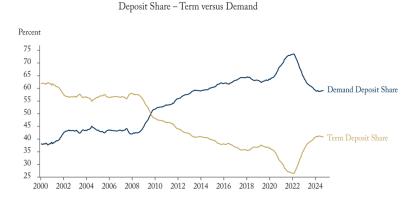In this edition of Graphic Intelligence, we tackle the question of whether foreign purchases of Canadian government debt could be part of the reason Canadian exports have been weak over the past few years. At first glance, borrowing abroad might not seem to have much connection to trade figures. But the familiar phrase “balance of payments” captures a key reality: as with any country, Canada’s international transactions in goods and services, flows of investment income, and purchases and sales of financial assets, must balance.
Figure 1 (Current Account & Direct Investment) shows Canada’s current account has been in deficit for years: our imports and payments of investment income to foreigners have exceeded our exports and their payments of investment income to us. Since the oil price collapse in 2014, the current account deficit has been bigger – and, net flows of direct investment turned negative as well.
Figure 2 (Balance of Portfolio Investments) shows foreign purchases of financial assets, the counterpart of our current account and direct investment. Foreigners have shown a particular appetite for Canadian government debt – which became more plentiful when governments started running bigger deficits.
Did the larger deficit on current account and direct investment cause the larger net foreign purchases of government debt and other financial assets? Or did the larger net foreign purchases of government debt and other financial assets cause the larger deficit on current account and direct investment?
Figure 3 (Balance of Payments) shows it’s a bit of both: the balance of payments must balance, so the two totals are mirror images of each other. If our governments issue less debt, it’s a fair bet that we will see some improvement in other parts of our external balance.
To learn more about this relationship between government debt and external balance, read our Intelligence Memo, “We would sell foreigners more goods and services if we sold them less government debt” by Bill Robson and Farah Omran.




